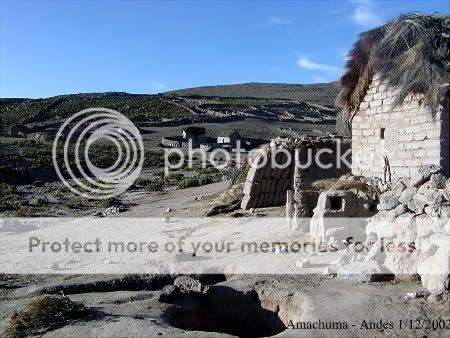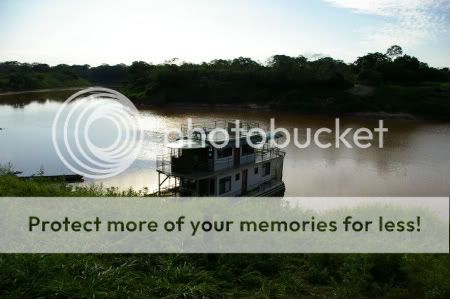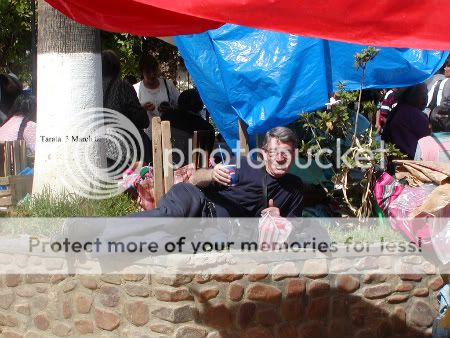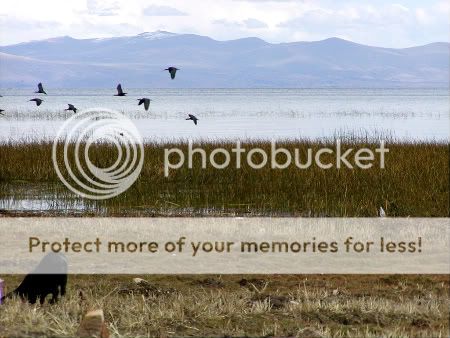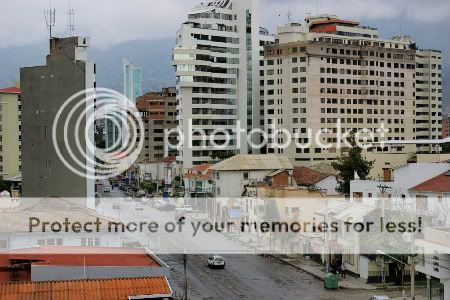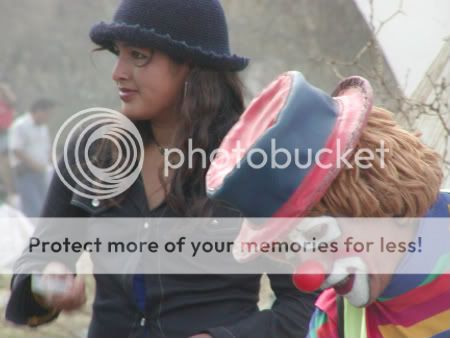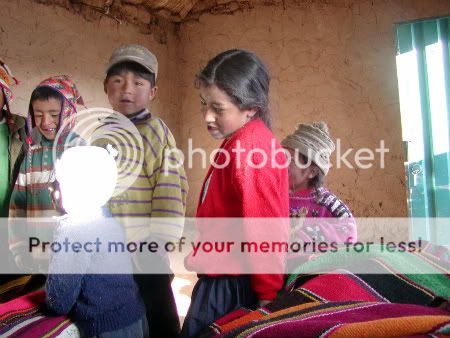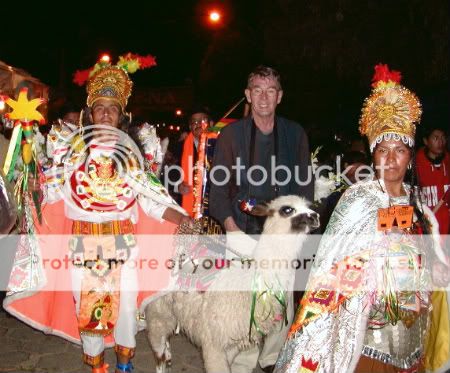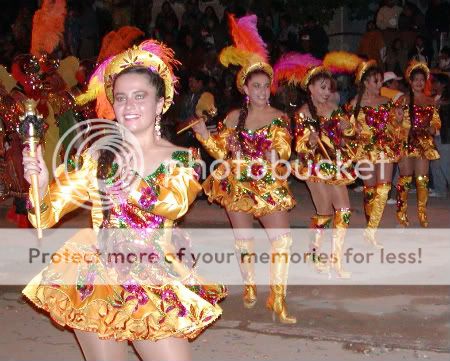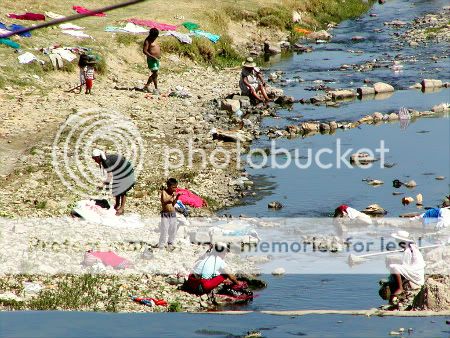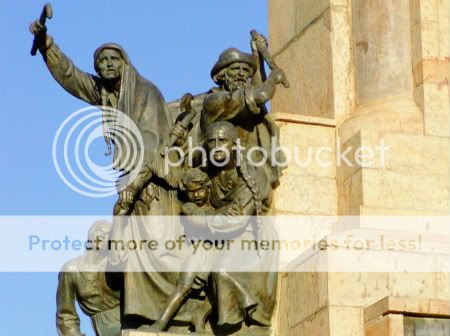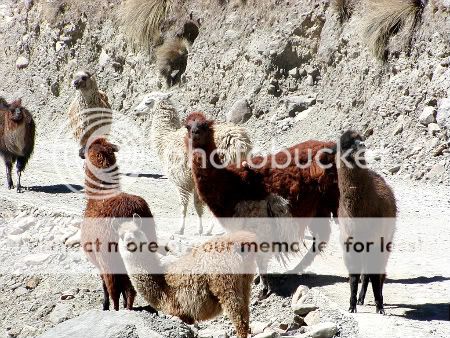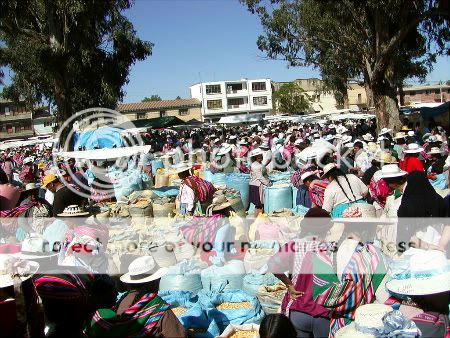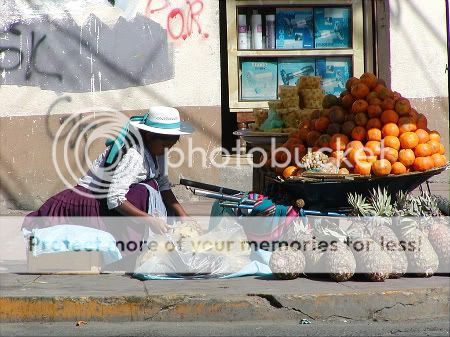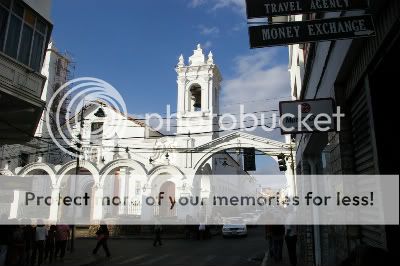Culture in Pictures: Bolivia
This series, started by renaerules, is designed to share the history and culture of Spanish-speaking countries through picture. With help I hope to cover them all over the next few months. Participation is highly encouraged and each person should include a description of the photo they provide. Also, since this thread is not an excersise I think it would be suitable to post in either Spanish or English and let the readers feel free to make corrections in the comment section. There is a lot of information available so hopefully in the end, with everyones help, we will have large pictorial to look back on. A special thanks should go to Fidalgo for keeping me going on this series.
Named for Simon Bolivar, this South American landlocked country borders the Andes mountain range and the Amazon basin. Rich in varying cultures from the pre-Colombian Incas to today's natives. Originally under Spanish rule, the region spent 16 years of war after declaring it's independence in 1809 and eventually became the Republic or Bolivar which in a matter of days was changed to Bolivia. It is officially called Estado Plurinacional de Bolivia.
I am anticipating some interesting cultural photos coming from this country.
.svg/200px-Flag_of_Bolivia_(state).svg.png)
Below we see the Aymara people celebrating the Pujllayfestival in Sucre, the constitutional capital of Bolivia. There are actually two capitals and the other is the seat of government in La Paz. While Spanish is the official language of the country there are still others spoken such as the Aymara and Quechua, the latter actually being a mix of various other ethnic groups.
.jpg) Morenada dancer
Morenada dancer
12 Answers
Hi everyone
I came here when I was made redundent in England. I came for 6 months and am still here years later.
Little is known about Bolivia in most places of the world so a few facts -
Look at Fidalgo's map above to know where it is.
It is about 4 times bigger than Great Britain with a population of about 10 million.
It was original called Alta Peru and was about twice its present size. It lost the rest in several wars with its neighbours - Peru - Chile - and Paraguay.. And some to Brazil.
Because of the "Pacific War" it lost access to the sea over 100 years ago which has slowed its development over the interceding years.
The main language is Spanish but there are over 30 other languages spoken here including Quechua, Aymara and Guarani.
PEOPLE According to the 2001 census, Bolivia’s ethnic distribution is estimated to be 55% indigenous, 15% European, and 30% mixed or mestizo (all categories are self-identified and answers vary widely depending on how questions are phrased). The largest of the approximately three dozen indigenous groups are the Quechua (29% or 2.5 million), Aymara (24% or 2 million), Chiquitano (1% or 180,000), and Guarani (1% or 125,000). No other indigenous groups represent more than 0.5% of the population. German, Croatian, Serbian, Asian, Middle Eastern, and other minorities also live in Bolivia. Many of these minorities descend from families that have lived in Bolivia for several generations.
Bolivia is one of the least developed countries in South America. Almost two-thirds of its people, many of whom are subsistence farmers, live in poverty. Population density ranges from less than one person per square kilometer in the southeastern plains to about 10 per square kilometer (25 per sq. mi.) in the central highlands. The annual population growth rate is about 1.97%.
The great majority of Bolivians are Roman Catholic, although Protestant denominations are expanding rapidly. Many indigenous communities interweave pre-Columbian and Christian symbols in their religious practices.
Soon it will celebrate its independence from Spain nearly 200 years ago.
At one point so much silver was taken from Bolivia by the Conquistadores that for every kilo mined in Europe 9 kilos were taken from Bolivia. Potosi the centre of much mining activity was once the richest city in the world. At over 4000 metres it is maybe also the highest. Only indigenous people were strong enough to work in the mines - the result was that very few slaves of African origin were ever brought to Bolivia.
Bolivia suffered a lot from corrupt governments over the years.It is a "very rich poor country".
I find it an amazing placee. The geography is very varied ranging from the high Andes mountains to the Amazon jungle. Because of its geography almost anything can be grown in Bolivia. In fact 70% of the world's flora and fauna is to be found in Bolivia.
I think the best way to get an impression of a place you have not visited is by seeing pictures. So there are some here that I have taken.
Amachuma - a typical Andean village
Lago Suarez near Trinidad (Beni)
Rio Mamoré - near Trinidad (Beni)
Me resting in Tarata (Cochabamba) on market day
Ladies day out in Copacabana (notice the tree across the the road)
Lago Titicaca ( a very special place)
Ave. Oquendo (Cochabamba - where I used to live)
Religious festival in Quillacollo (Cochabamba)
Kids in Amachuma ( the white head was the result of extremely bright sunlight in the high Andes)
Carnival in Oruro
Carnival in Oruro
Kids and a dog in a village at over 4000 Metres between Oruro and La Paz
Washing in the Rio Rocha (Cochabamba)
Cochabamba from on high
Tribute to "Las heroinas" (The women and old men fought the Conquistadores
with sticks and stones in the fight for liberation)
LLamas in the mountains near Cochabamba
Market day in Tarata
Fruit seller
Cochabamba Valley
Sucre (The original Capial city - today La Paz is also a Capital city.
I hope these pictures give you an idea of Bolivia.
This looks rather interesting. The Uros (floating islets) on Lake Titicaca
Here are some personal photos from the central Bolivian department (sort of like a state in the USA) of Cochabamba.
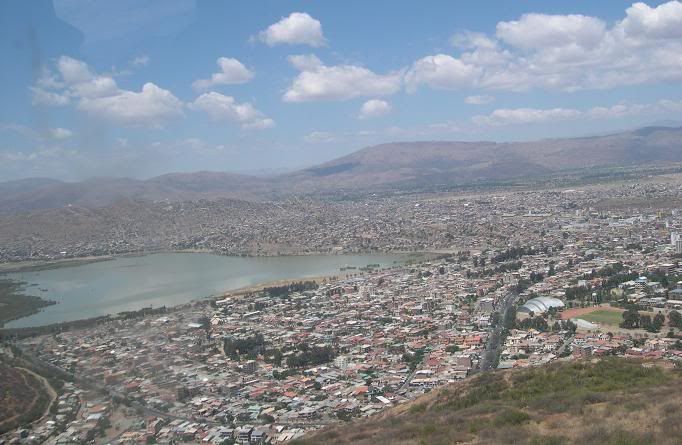
ciudad de Cochabamba - vista parcial (2005)
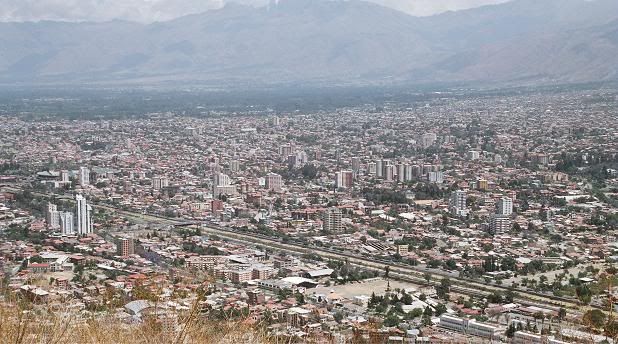
Cochabamba city - partial view (2007)

Villa Tunari y el río Espíritu Santo - provincia de Chapare, Cochabamba (2005)
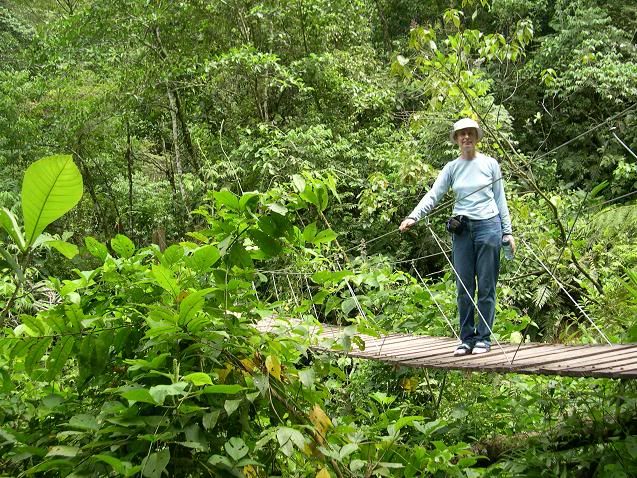
Hiking in a National Park - Chapare province, Cochabamba (2005)
The following are photos from the Bolivian high country - 3500 to 4000 meters above sea level. These were all taken in July, 2007.
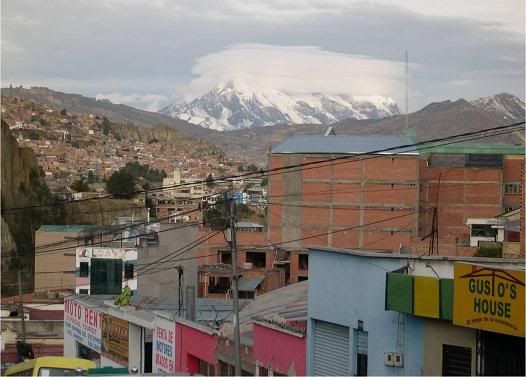
Mount Illimani rises above the city of La Paz, administrative capital of Bolivia
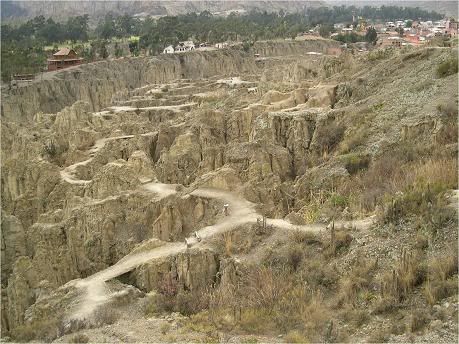
La Valle de la Luna - La Paz

La Isla del Sol en el Lago Titicaca - departamento de La Paz
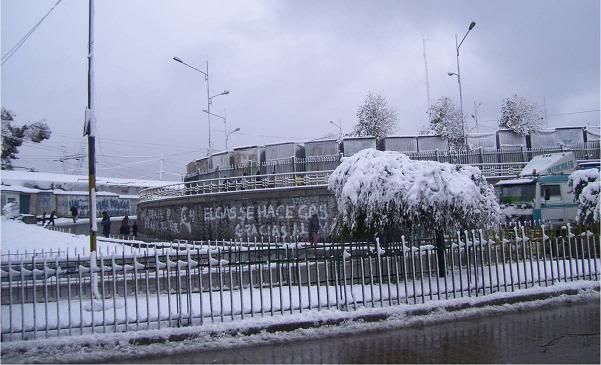
Sometimes it snows in the Bolivian high country!
El Alto - near the international airport, La Paz.
My favorite area of Bolivia is the eastern lowlands of Santa Cruz department, towards the borders with Brazil and Paraguay. Here, the landscape is in transition between the tropical, amazonian rain forests further north and the grasslands further south (the pampas of Argentina). Here are just a few scenes from this region (junio de 2.007):
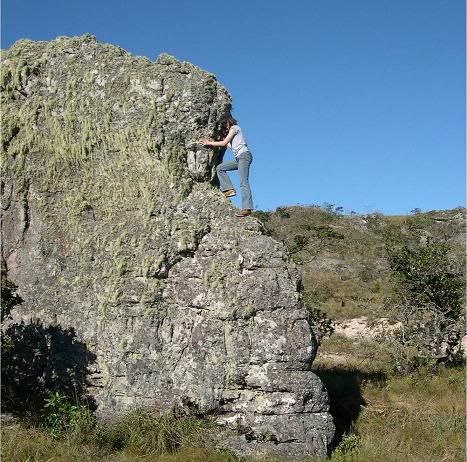
My daughter climbing one of many rock formations in the immediate area of this photo

El Arco - Santiago de Chiquitos, departamento de Santa Cruz
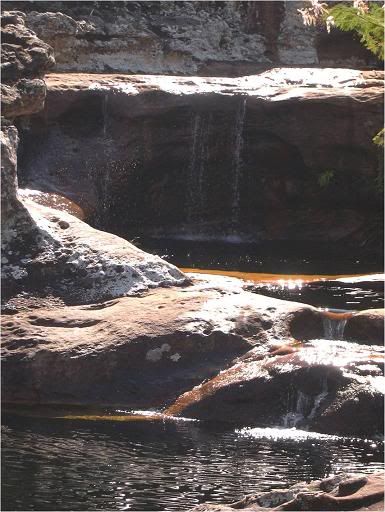
Las Posas - vista parcial (a gorgeous series of pools)
Traveling the "Death Road" in the Yungas Region of Bolivia. There must be something very special at the top, to make this trip worthwhile!

This series on South America has been totally fascinating , I am mesmerized by the beauty and culture you have been showing, each one seems to outdo the other in color and incredible photographs . all who have contributed are to be congratulated for giving us this series, you should all be employed by the Tourist industry for you do a better job than they appear to, otherwise I would know more about South America than I do. Well done and thank you.
El Fuerte de Samaipata, declared UNESCO World Heritage Site in 1998 and located in Florida Province, Santa Cruz department, is a pre-Columbian religious site of the Chanes people. The region was conquered by the Guarani warriors and the Spanish conquistadors.



Tiwanaku (Spanish: Tiahuanaco and Tiahuanacu) is an archaeological site in the department of La Paz. It was recognized as UNECO World Heritage Site in 2000. The ruins of the ancient city state are near the south-eastern shore of Lake Titicaca. The Temple of Kalasasaya or Temple of Stopped Stones and the pyramid of Akapana are famous architectures there.





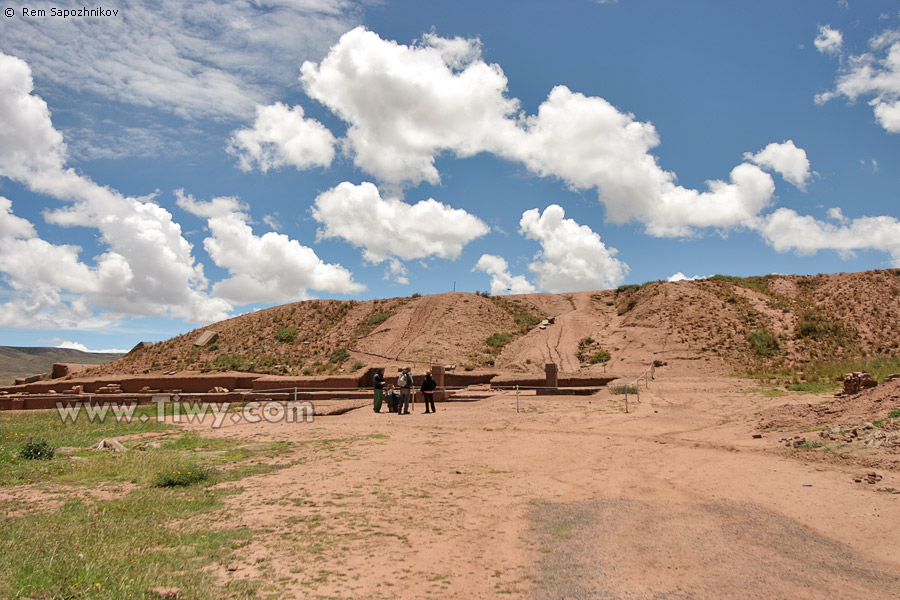
Bolivia was much larger in the past. Bolivia lost a lot of lands after being defeated in many wars, such as The War of the Pacific (1879-1884, ally of Peru, against Chile), The Chaco War (1932-1935, against Paraguay). The aftermath is that Bolivia became a landlocked country. Half of its territory after its independence was transfered to neighbor countries. Bolivia is the poorest Hispanic country in South America.


The city of Potosí, capital of the department of Potosí, was declare UNESCO World Heritage Site in 1987. Founded in Apr 1, 1545, it is famous for silver mines


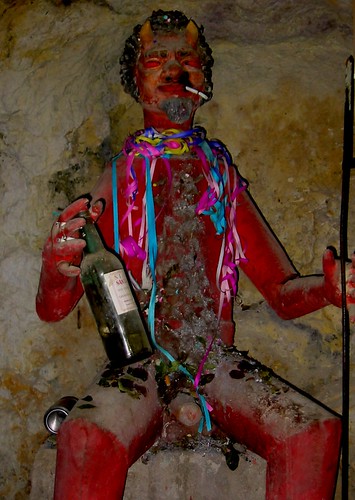

Out of all the Andean countries, Bolivia remains perhaps the most culturally linked to the indigenous peoples. Like most of its neighbors, Bolivia was long-dominated by Spain and its attendant culture. Even after independence, Bolivian music was largely based on European forms. In 1952, a revolution established nationalistic reforms granting increased social, cultural and political awareness for the Aymara and Quechua natives. Intellectuals in the country began wearing ponchos and otherwise associating themselves with native cultures, and the new government promoted native folklore by, among other methods, establishing a folklore department in the Ministry of Education.



Carnival in Bolivia is a without a doubt the most popular of the Bolivian festivals. Each region of the country celebrates carnival in their own manner. These festivals are the best demonstration of our folklore and traditions. The biggest carnival festival is in Oruro and has been declared by UNESCO as Cultural Patrimony of Humanity”.

mi novio es de Bolivia, suena como un lugar hermoso! bien hecho. i might visit with him to Bolivia although his whole family has been in Carnaval and im guessing i would do it with him, he fluent in Spanish, which is different from the kind i know, since im still learning and im half mexican so there seems to be a language difference between the spanish of both of them, also seems differently accented
nice pictures
